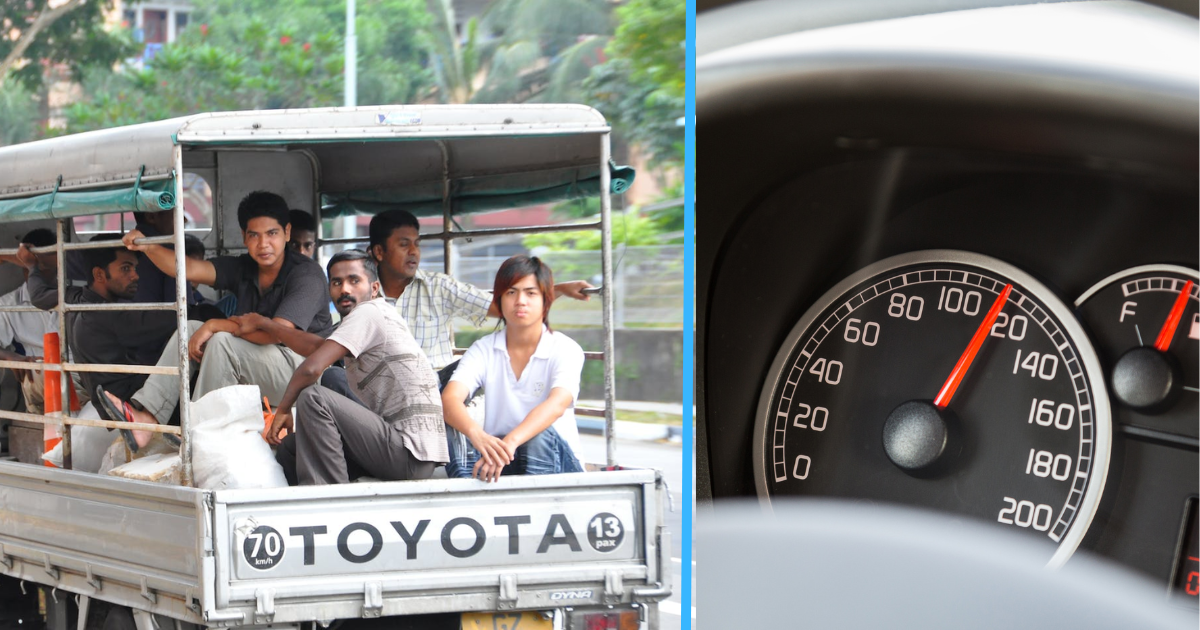s
Singapore Introduces Speed Limiters for Lorries in New Road Safety Push
In August, the Ministry of Transport highlighted that approximately 4 percent of the total annual injuries from road traffic accidents over the past five years involved lorries.
The Land Transport Authority (LTA) has also observed that the average injury rate was 8.7 individuals per 1000 lorries from 2011 to 2020.
Lorries, significantly larger and heavier than most other vehicles, are inherently more difficult to manoeuvre.
Coupled with the load they carry, which sometimes includes passengers, driving at high speeds can readily lead to mishaps.
Consequently, when a lorry is involved in a traffic accident, the threat extends to many, including the driver, victims, and migrant workers aboard, with heightened danger and the potential for loss of life.
To mitigate the incidence of injuries resulting from lorry-related traffic accidents, the LTA has introduced several new measures.
Enhanced Road Safety with More Speed Limiters
To foster better road safety and driving behaviour, an increased number of lorries will be mandated to fit a speed limiter.
At present, only goods vehicles with a Maximum Laden Weight (MLW) exceeding 12,000kg are required to have a speed limiter.
Soon, this requirement will extend to all lorries with an MLW ranging from 3,501kg to 12,000kg.
Drivers will have a grace period of up to three years to comply, depending on the MLW and registration date of the vehicle.
Implementation Deadlines for Speed Limiters
Lorries registered before 2018 must install a speed limiter by 2026 if their MLW is between 5,001kg and 12,000kg, and by July 2026 for those with an MLW between 3,501kg and 5,000kg.
s
For lorries registered from 2018 onwards, the installation of the device must be completed before 2027 if their MLW is between 5,001kg and 12,000kg, and by July 2027 for an MLW between 3,501kg and 5,000kg.
Imported lorries will also require speed limiters for registration approval starting in 2026. The necessary documentation should be submitted to the LTA at the time of the vehicle’s pre-registration.
Complementary Safety Measures
Alongside speed limiters, the LTA and the Ministry of Manpower (MOM) mandate the installation of higher side railings and canopies on lorries.
MOM has further stipulated that lorries transporting workers must appoint a “vehicle person-in-charge” (V-PIC). The V-PIC is authorized to prevent the driver from operating the vehicle if deemed unfit for driving.
In addition, all lorries used for ferrying workers must be equipped with canopies to offer protection, including shelter from adverse weather conditions.
Beyond these tangible measures, additional soft strategies are in place.
MOM requires employers to ensure that their lorry drivers, especially those with dual roles of transporting workers and working on-site, receive adequate rest prior to driving.
This is in conjunction with existing regulations concerning working hours.
Effectiveness of the Measures
Yet, questions remain about the effectiveness of these measures.
Transport and safety experts have voiced concerns that the initiatives may fall short, pointing out that the open design of lorries is unalterable and advocating for a switch from lorries to buses for transporting people.
s
The reason being the open structure of lorries exposes workers to the risk of falling out, particularly in the event of an impact or collision.
And unlike passenger vehicles, lorries may not undergo crash testing to ascertain the potential effects of collisions on those being transported.
Despite this, companies strongly oppose such changes, echoing sentiments from the 2009 debate. They value the dual functionality of lorries, which enables the transportation of both personnel and equipment.
Thankfully, with the current measures enforced, then Transport Minister Raymond Lim noted that the 10-month period flanking their introduction saw a 17 percent decrease in injury cases.
Ultimately, the onus is on lorry drivers to exercise heightened caution and take full responsibility for their actions, rather than shifting blame onto others.

